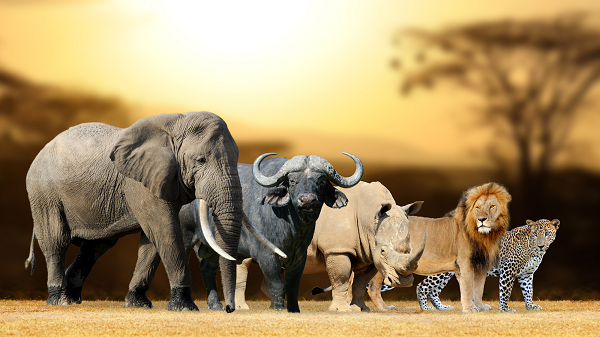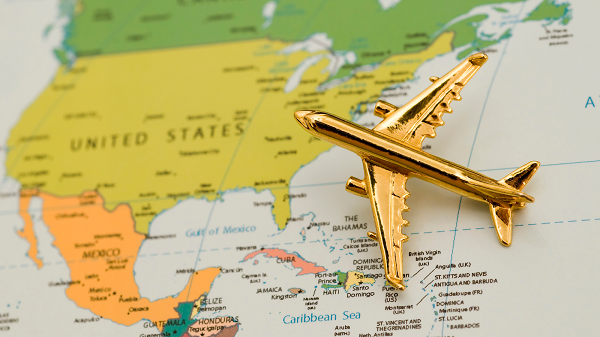Africa on your bucket list?
Complete Guide to Trophy Fees for Africa’s Big Five and Plains Game.

Introducing Trophy Fees and African Hunting Safaris
You’ve heard of them; Africa’s big five is arguably the most widely known group of animals on the planet due to their massive size, remote living, and intense danger that comes with seeing them. While not for everyone, some hunters may wish to embark on an African hunting safari to get a chance at taking one of Africa’s big five back home. But flying to Africa and going on safari isn’t as easy as it sounds, especially with the protection of these species and subsequent prosecution for poaching activities. This guide will tackle the cost of hunting Africa’s big 5 and plains animals, especially the trophy fees that are required to legally partake in a hunt out here. Understanding Trophy Fees: What They Cover and Why They Matter
A fact of big game hunting in Africa, is the knowledge and risk that outfitters take on to guide you on safari. This, in essence, is where trophy fees come from. Trophy fees are separate from your daily rate out on the hunt and only apply once an animal has been hunted. The associated trophy fee depends on what animal is taken and, sometimes, the quality of the animal. This trophy fee goes towards not only the outfitter, who put you in a place and provided the information for a successful hunt, but also through taxes goes to wildlife funds for research and conservation. While not exactly exciting to pay more money for your hunt, trophy fees feel like a necessary part of sustaining big game hunting.
Overview of Africa’s Big Five and Plains Game Species
In this guide, we’ll explore the trophy fees for Africa’s big five and some plains game species. Within these categories of animals you’ll find such names like lions, elephants, rhinos, leopards, and cape buffalo for Africa’s big five and animals like wildebeest, bushbuck, impala, kudu, zebra, ostrich, and more within the plains game list of species. Come see what the costs look like to hunt one of these incredible animals.
Trophy Fees for Africa’s Big Five: A Detailed Breakdown
Trophy fees will vary depending on the species you’re hunting, the size of the animal taken, as well as the outfitter you’re using. Here is a general look at Africa’s big five and their subsequent trophy fees:
Trophy Fees for Hunting Lions
Lions being quite a dangerous hunt and being so large tend to carry large trophy fees with them. These fees will depend not only on the size, but the gender and any unique alterations. A lioness can carry trophy fees of around $6,000 whereas lion males may cost upwards of $17,000 or more if they have unique coloration.
H3:Trophy Fees for Hunting Elephants
Elephants tend to carry steep prices due to, again, the animals large size and ever present danger during the hunt. Typically, trophy fees for elephants will start around $22,000 and will only go up from there with larger individuals.
H3:Trophy Fees for Hunting Rhinos
Rhinos are another expensive trophy fee for the select rhino species that can be hunted. Most commonly you’ll likely see trophy fees for the white rhinoceros, which can fetch prices that start at $29,000 and continue to upwards of $100,000 for extremely large specimens.
H3:Trophy Fees for Hunting Leopard
Leopards make for quite the hunt and, depending on the area, can carry a steep trophy fee. These hard to hunt cats can see trophy fees that start around $8,500 and will only go up depending on where your hunt takes place.
H3:Trophy Fees for Hunting Cape Buffalo
Cape buffalo can vary widely when it comes to trophy fees in Africa. The size, gender, and overall appearance of the cape buffalo will all factor in. Small cows may cost around $4,000 whereas the largest males will cost upwards of $20,000 plus.
H2:Plains Game Trophy Fees: What To Expect
In general, plains game species will carry a much less expensive trophy fee than their big five counterparts. There is also a wider range of animals from crocodiles to wildebeests or warthogs. Here is an overview for some of the trophy fees for common plains species.
H3: Common Plains Game Species and Their Trophy Fees
H4: Warthog
Warthogs are one of the more affordable trophy fees available amongst the common plains game species. On average, one should expect to pay around $550 for their fee, subject to change depending on the size of the animal. These animals are smaller and easier to find, though extremely recognizable.
H4: Impala
More or less the deer of the African plains is the impala with their tremendous twisted horns. Trophy fees for your average impala will cost around $550 as these animals can be readily available depending on what country you’re in.
H4:Zebra
There are multiple zebra species that can be hunted on the plains both with similar trophy fees. On average, zebras will run you around $1,500 per zebra depending on size.
H4:Wildebeest
Wildebeests are one of the larger animals amongst the common plains animals. With that larger size comes more danger, which is reflected in a higher than average trophy fee when compared to other comparable species. Your average wildebeest trophy fee runs around $1,400.
H4:Crocodile
Crocodiles are a dominant predator in the plains that can make for a good hunt. These are currently the largest reptiles on earth and provide a danger whenever interacting with them. For these reasons, trophy fees are expensive running anywhere from $7,000 to $12,000 plus depending on size and location.
H3:How Plains Game Hunts Compare in Cost to Big Five Hunts
Across the board, plains game hunting will be cheaper compared to your big five hunts. A lot of this stems from the trophy fees associated with taking an animal. As evident above, big five trophy fees start way above the highest trophy fees for plains game species. On top of that, observation costs and other operational expenses are almost always more expensive during big five hunts compared to plains game species.
H2:Budgeting for Your African Safari: Combining Big Five and Plains Game Hunts
When planning out your African safari, budgeting is a crucial aspect. As evident above, trophy fees for big five animals can be extremely steep especially if you take multiple individuals during your trip. This is where the potential of combining the two types of animals together on one trip.
H3: Strategies for Managing Costs and Maximizing Value
Combining big five and plains game species can be a way to save a few dollars while still experiencing the full package on African hunts. Observation costs and trophy fees can simply be too expensive for big five animals to sustain a whole trip reasonably, so mixing in your favorite plains game species on other days can round out a trip making it more affordable but still action packed. This approach will be sure to send you home with a diverse array of trophies, meats, and stories.
H3:Cost-Effective Safari Packages: What to Look for
With potentially a ton of moving pieces in a safari such as days hunting, lodging, food, weapons/equipment, and local knowledge, finding a package deal can be a great way to streamline your trip and save a few dollars. Safari packages are often optimized to expose you to the best experience possible with a variety of hunts and great opportunities to take animals. Keep an eye out for packages that combine big five and plains game species for the ultimate, all-around experience on your safari.
H2:Bringing Trophies Back to North America: Costs and Considerations
Getting your trophies back to North America isn’t as simple as walking through the gate. Usually, depending on the trophy, there are legal requirements and costs associated with importing your trophy back home. Let’s take a quick peek at what to expect in this regard:

H3: Legal Requirements for Importing Game Trophies
Always do the research on your specific animal trophy being imported to make sure you understand all the permits and regulations associated with each animal as they can vary wildly. Some species, as they become more endangered, require more documentation to legally import. Without proper documentation and permission, you can be exposed to prosecution under numerous wildlife protection acts in North America.
There will always be a cost associated with importing your trophies back to North America as well. Usually, fish and wildlife services will charge an inspection fee as you apply for approval to import. Documentation and permits aren’t free either, and if you’re shipping your goods separate from yourself, you should expect to see more costs there as well.
H3:Shipping and Handling Costs for Big Five and Plains Game Trophies
H2:Wrapping Up: Trophy Fees for Africa’s Big Five and Plains Game
The African safari boasts some of the most unique hunting experiences on the planet. The untouched land is truly wild and completely different when compared to North America. As such, having the chance to hunt these animals and bring them home is a once-in-a-lifetime experience. Before embarking, understand what signing up for an African hunt entails in both potential experiences and potential costs. Hunting trophy fees are common practice on these hunts and can get expensive if you aren’t careful. With some of the big five animals costing upwards of $100,000 to take, dedicating to a financial plan as part of a package can be extremely beneficial. With so many animals to choose from with extremely affordable fees and packages available, do your research and book your hunt today.

